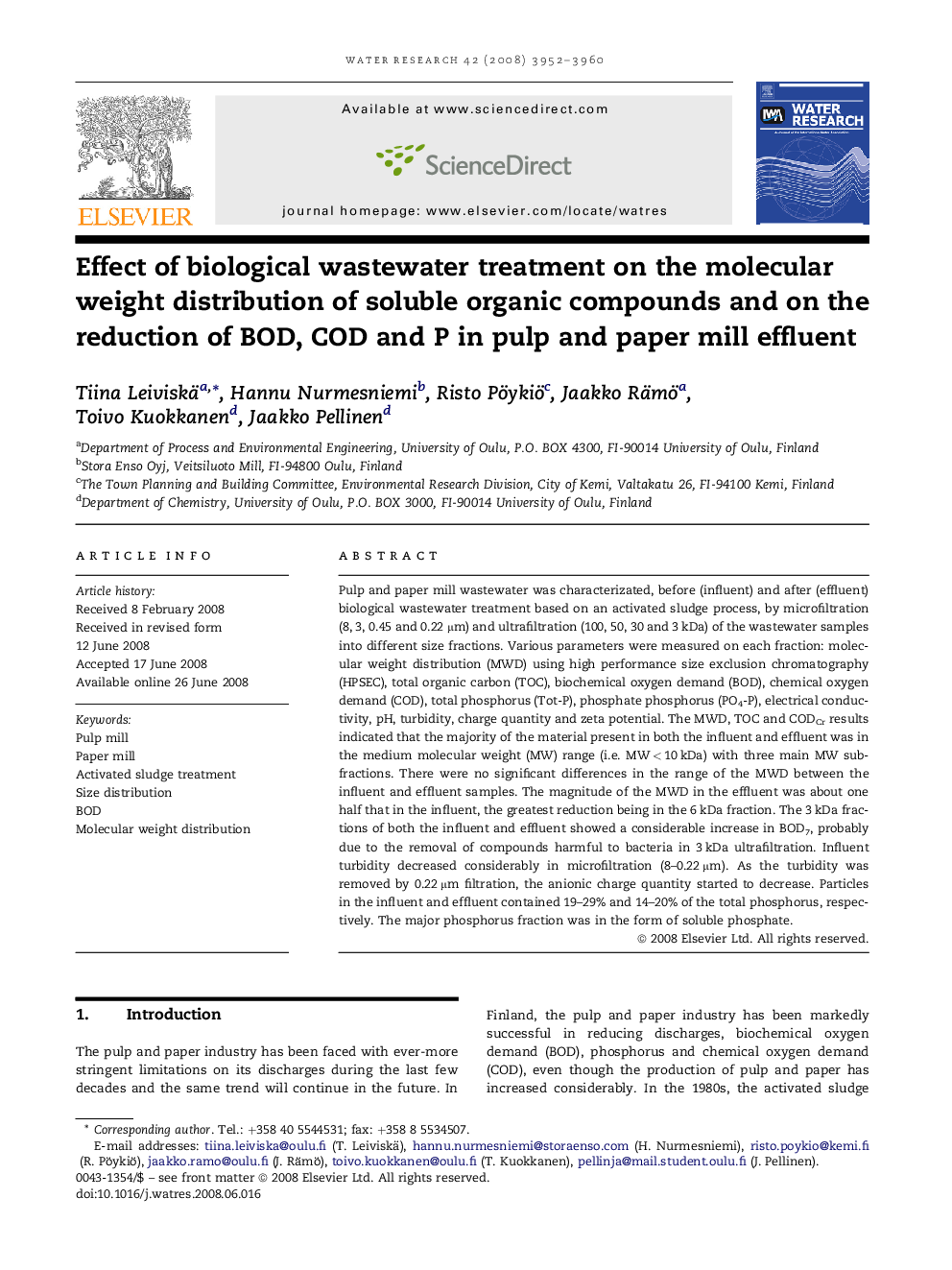| کد مقاله | کد نشریه | سال انتشار | مقاله انگلیسی | نسخه تمام متن |
|---|---|---|---|---|
| 4485987 | 1316971 | 2008 | 9 صفحه PDF | دانلود رایگان |

Pulp and paper mill wastewater was characterizated, before (influent) and after (effluent) biological wastewater treatment based on an activated sludge process, by microfiltration (8, 3, 0.45 and 0.22 μm) and ultrafiltration (100, 50, 30 and 3 kDa) of the wastewater samples into different size fractions. Various parameters were measured on each fraction: molecular weight distribution (MWD) using high performance size exclusion chromatography (HPSEC), total organic carbon (TOC), biochemical oxygen demand (BOD), chemical oxygen demand (COD), total phosphorus (Tot-P), phosphate phosphorus (PO4-P), electrical conductivity, pH, turbidity, charge quantity and zeta potential. The MWD, TOC and CODCr results indicated that the majority of the material present in both the influent and effluent was in the medium molecular weight (MW) range (i.e. MW < 10 kDa) with three main MW sub-fractions. There were no significant differences in the range of the MWD between the influent and effluent samples. The magnitude of the MWD in the effluent was about one half that in the influent, the greatest reduction being in the 6 kDa fraction. The 3 kDa fractions of both the influent and effluent showed a considerable increase in BOD7, probably due to the removal of compounds harmful to bacteria in 3 kDa ultrafiltration. Influent turbidity decreased considerably in microfiltration (8–0.22 μm). As the turbidity was removed by 0.22 μm filtration, the anionic charge quantity started to decrease. Particles in the influent and effluent contained 19–29% and 14–20% of the total phosphorus, respectively. The major phosphorus fraction was in the form of soluble phosphate.
Journal: Water Research - Volume 42, Issue 14, August 2008, Pages 3952–3960